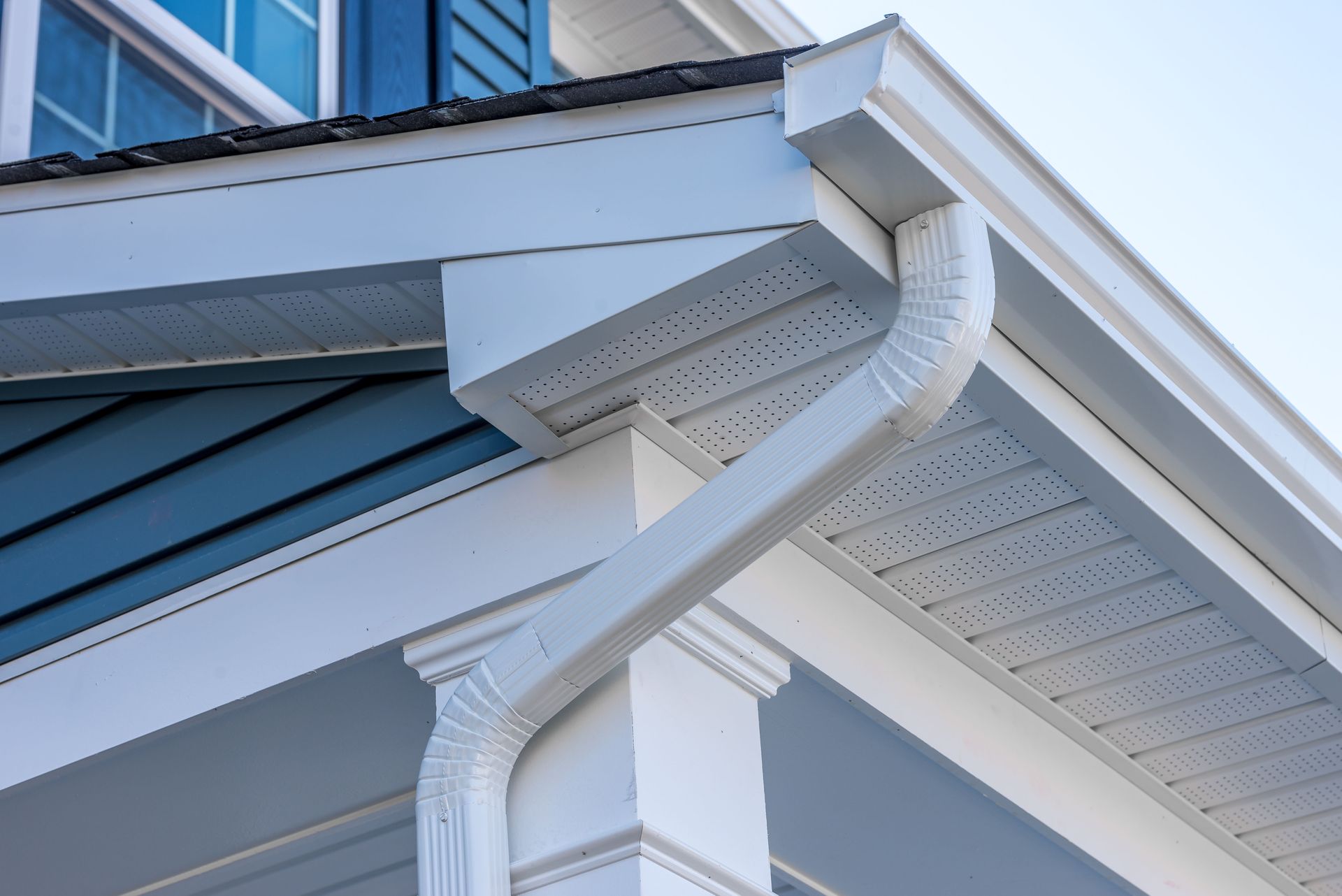October 13, 2025
Home drains are an essential part of protecting a home’s foundation by directing rainwater safely away from the structure. Without well-functioning spouts and waterspouts, water damage, soil erosion, and landscape deterioration can occur, jeopardizing both the structural integrity and appearance of a property. Downspouts also help manage water flow, prevent costly foundation repairs, and preserve the aesthetics of a home. For homeowners undergoing renovations or remodeling projects, having a reliable system of house drainpipes is particularly important to safeguard long-term investments. Understanding the types of gutters, installation methods, and proper maintenance is key to ensuring lasting protection and performance for any home.
With a growing emphasis on protecting homes from water-related damage, homeowners are increasingly prioritizing the installation and upkeep of home drains. The following sections outline everything you need to know about selecting, installing, and maintaining downspouts to keep your home safe and visually appealing.
Choose Gutter Materials
The material of house drainpipes plays a critical role in their durability, performance, and maintenance needs. Aluminum is lightweight, resistant to corrosion, and cost-effective, making it a popular choice. When selecting downspouts, it’s important to consider your local climate, architectural style, and budget to ensure the best long-term solution.
Different styles of gutters, such as K-style or half-round, serve both functional and aesthetic purposes. K-style waterways, resembling crown molding, can handle higher water volumes, making them ideal for regions with heavy rainfall. Half-round house drainpipes, often seen in historic or traditional homes, reduce the risk of clogs and corrosion due to their smooth interior. Seamless options, which minimize leaks, are increasingly preferred for modern homes. Homeowners should evaluate which style complements their property while providing reliable water management.
Determine Gutter Sizes and Shapes
The right downspout size depends on the roof’s slope and anticipated water volume. Larger spouts handle more water, which is especially useful in rainy regions, while smaller spouts may suffice for homes with limited roof runoff. The shape of home drains also impacts water flow, with round and square designs offering different drainage efficiencies.
The cross-sectional area of house drainpipes affects capacity, with deeper and wider drains offering better performance. However, larger downspouts may require additional structural support and may be more visually prominent. Homeowners should balance functionality with curb appeal while considering any local design guidelines or neighborhood requirements. Strategic planning can also integrate waterspouts into sustainable water management solutions, such as rainwater collection systems, without compromising the home’s appearance.
Highlight the Advantages of Seamless Gutters
Seamless gutters are crafted from a single continuous piece of material, which significantly reduces the risk of leaks compared with sectional spouts that have multiple joints. This single-piece design creates a sleek, polished appearance that enhances the overall aesthetic of a home. Because there are fewer seams, seamless gutters are less prone to clogging and require less maintenance over time. While professional installation is typically recommended, the long-term benefits often outweigh the initial cost, as homeowners can enjoy a durable, reliable system that lasts for many years.
In addition to reducing leaks and maintenance, seamless gutters offer a custom fit tailored to the exact dimensions of the home. This precision ensures efficient water flow and maximizes protection for the foundation, landscaping, and exterior surfaces. Seamless downspouts also provide a more uniform look along the roofline, which can increase curb appeal and property value. Homeowners prioritizing low-maintenance, long-lasting solutions often find that seamless gutters deliver superior performance, combining functionality with an attractive, uninterrupted design.
Consider Gutter Color and Aesthetics
The color of waterspouts can enhance a home’s curb appeal, either blending in with the roof and siding or providing a contrasting accent. Drainpipe materials, including aluminum, are available in a wide range of colors, allowing homeowners to match existing paint or roof schemes. Lighter-colored home drains may help reduce heat absorption in warmer climates, offering a subtle functional benefit.
Custom color options allow homeowners to create a cohesive exterior look, with brackets, end caps, and accessories designed to complement the home’s architecture. Integrating downspouts into the overall design ensures both visual appeal and efficient water management. Consulting with design professionals or exploring current trends can help homeowners select colors that enhance both aesthetics and long-term performance.
Plan Gutter Costs and Budgeting
Understanding the factors affecting the cost of gutters is essential for planning any installation. Material choice is a major determinant — aluminum is more affordable. Installation complexity, drainpipe length, and roof design also impact costs. Investing in durable downspouts upfront can prevent recurring expenses caused by damage or repairs.
Homeowners should also consider labor costs, removal of old spouts, and disposal fees. Seamless drainage often requires professional installation, which raises the initial cost but reduces future maintenance. According to IBISWorld, as the Federal Reserve eases monetary tightening over the next five years, remodelers are expected to benefit from increased residential construction activity due to lower 30-year conventional mortgage rates. This may provide more options and better pricing for homeowners seeking new downspouts. Evaluating multiple quotes and factoring in long-term value ensures smart budgeting and optimal outcomes.
Prepare for Gutter Installation
Accurate preparation is critical for successful house drainpipe installation. Measuring the roofline determines the required length of spouts and downspout locations. Preparing tools, clearing debris, and checking for local permits or code compliance all contribute to a smooth installation process.
The timeline should also account for weather conditions and temperature variations, as these can affect the alignment of waterspouts and home drains. Pre-installation planning helps avoid common mistakes and ensures the system functions correctly from day one.
Follow the Installation Process
Installing downspouts begins with inspecting and preparing the fascia. Home drains are cut to length and fitted with end caps, drop outlets, and miters for corners. Brackets or hangers are attached at regular intervals to prevent sagging. Spouts are then connected to guide water away from the foundation efficiently. Testing the system with water confirms proper flow and identifies any adjustments needed.
Attention to detail during installation prevents future issues such as pooling, leaks, or ice dams. Incorporating screens or guards during installation can further reduce maintenance needs. Correct installation improves overall home protection and minimizes the risk of costly damage.
Maintain Gutters Regularly
Leaves, twigs, and debris can block water flow, causing overflows and strain on joints. Simple tools like a garden trowel or scoop, followed by a hose flush, keep downspouts clear and functional. Inspections during cleaning help identify early signs of wear, corrosion, or minor damage that can be addressed before escalating into costly repairs.
Preventive maintenance extends the lifespan of house drainpipes. Inspect waterspouts after storms, check for loose brackets, and ensure spouts remain clear. Small fixes, such as resealing joints or adjusting slopes, prevent major problems. Monitoring downspout performance consistently protects home foundations, landscaping, and exterior surfaces while reducing repair frequency.
Gutters are a critical component in protecting homes from water damage, erosion, and structural issues. Selecting the right materials, sizes, styles, and colors, combined with proper installation and routine maintenance, ensures lasting performance and adds value to the property. By understanding the options and planning effectively, homeowners can make informed decisions that safeguard their homes for years to come.
At Acadiana Contractors, we provide expert home drain and waterspout services designed to protect your home and enhance its appearance. We help homeowners navigate every step of downspout installation, maintenance, and repair, ensuring systems are both functional and visually appealing. Contact us today to explore how our solutions can benefit your home.









